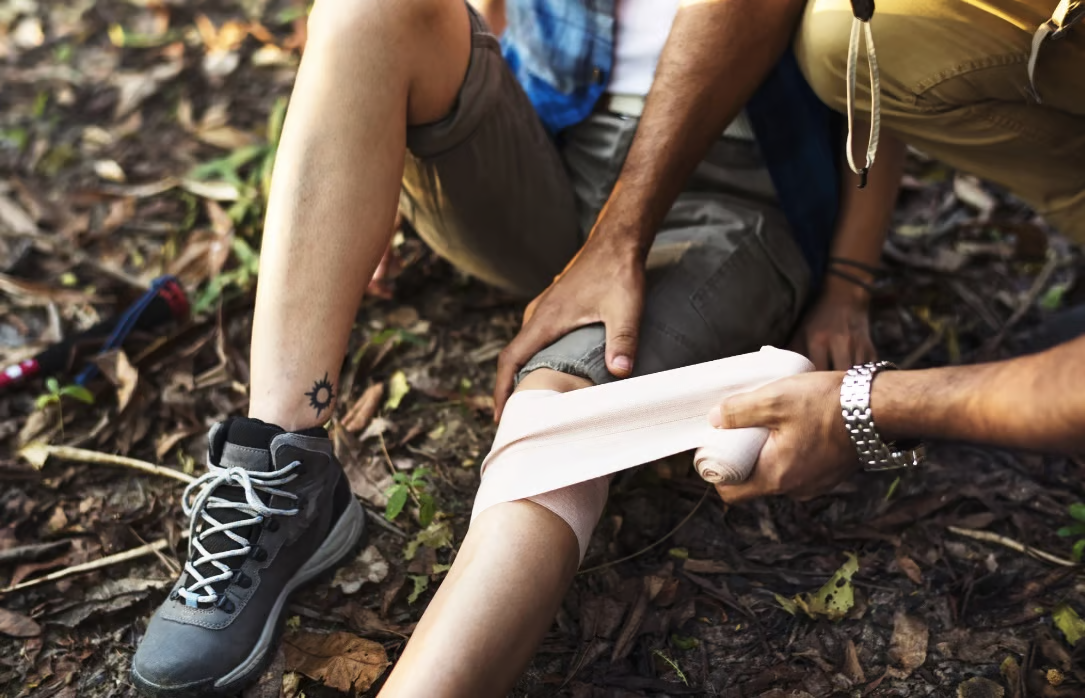Puncture wounds are not little scrapes. 2% of Americans live with chronic or open wounds. Failing to clean your wound properly can result in an infection, mobility issues, and chronic pain.
Thankfully, you can learn how to clean a puncture wound in just a few minutes. The key is to break the process down into simple steps and get the resources you need for cleaning. Here’s what you should know about how to clean a cut.
Stop the Bleeding
If your wound is bleeding significantly, your first priority should be to stop the bleeding. Apply direct but light pressure on the wound, using enough force to keep the blood from flowing out of the skin. If you can raise the affected area over your heart, you should do so.
Do not touch your wound with your hand until your hands are clean. If you have time to clean or disinfect your hands, you should do so immediately. You should otherwise apply pressure using gauze, a piece of tissue paper, or a clean cloth.
Do not apply pressure to a bruise or burned skin, as you may damage your skin further. It is okay if blood oozes through your cloth or gauze, though you should leave it in place to slow the bleeding.
If you have a gaping wound on your arm or leg, you should tie a tourniquet to your limb. You can use a belt, rope, or another tool that can wrap around your limb entirely and apply consistent pressure.
Tie the tourniquet several inches above your injury, tightening it until the bleeding stops. Do not apply it for longer than two hours, as you risk cutting off the blood flow to your limb.
Wash Your Hands
Before you touch your wound, you should clean your hands using anti-bacterial soap and hot water. Wash your hands for at least 20 seconds, scrubbing underneath your fingernails, between your fingers, and on your wrists. After you’re done disinfecting a wound, you should wash your hands again to remove any blood on them.
Hand sanitizer is fine to use, as long as you apply it to all parts of both hands. You can also wear sterile gloves, though you should throw them away in a trash bin after you’re done cleaning a wound.
Clean the Wound
You can start wound cleaning by rinsing your skin under clear water. While you’re rinsing it, keep an eye out for any dirt or debris that may be caught in your skin. Run the skin under the water for at least five minutes or until you start feeling pain.
If you notice dirt or debris, you can use tweezers to remove it. You should clean them using isopropyl alcohol and hot water, but you should not apply the alcohol to your skin. Do not pick at the wound or try to close your skin together with your tweezers, as you risk making your bleeding worse.
Do not use soap for cleaning a wound. Soap can sting, contribute to an infection, or slow down the healing process.
Do not use a brush to clean your injury. You may apply too much pressure and damage your stick, or a bristle may break off and stick in your wound.
Use Antibiotics
Antibiotic cream can kill any microorganisms around your wound and keep the skin moist. You can use any over-the-counter antibiotic cream you have on hand, including Neosporin and Polysporin. Keep a first-aid kit in your home stocked with a few different creams, and get refills here so you always have enough.
Apply a light amount using your clean fingertips, rubbing the cream gently into your skin. Keep your eye on your skin so you can respond if you have a rash or blisters. If you develop a rash, you should visit your doctor, as you may have an infection.
Dress and Bandage the Wound
You should only cover a wound if it’s going to touch your clothes, dirt, or other objects. Applying a bandage over a minor puncture wound can trap sweat and grime around your injury, slowing the healing process down. However, you should always cover large wounds, actively bleeding injuries, and cuts on your hands and knees.
Use a bandage that will cover your entire wound and doesn’t feel too tight against your skin. You should change your bandage every day so you avoid infections and can get a better look at your injury.
Monitor the Situation
You are not done once you’ve applied a bandage over your wound. Signs of infection include worsening pain, red skin around the injury, pus, and a high fever. Go to your doctor immediately if you notice your wound is infected.
You should go to the emergency room if your wound doesn’t stop bleeding after a few minutes or if you have a very deep or dirty wound. A wound from a bite is also a medical emergency, as you may have an infection from your attacker’s saliva.
Learn How to Clean a Puncture Wound
You must learn how to clean a puncture wound immediately. Stop the bleeding with a towel or tourniquet, then wash your hands with soap and water or a hand sanitizer.
Wash the injury with clean water and do not use soap or alcohol to wash. Apply an antibiotic cream or ointment around the injury, then put a bandage over your cut. Change your bandage every day and go to your doctor if your injury hurts or seems discolored.
Cleaning wounds is just one first-aid strategy you should learn. Read more first-aid guides by following our coverage.





